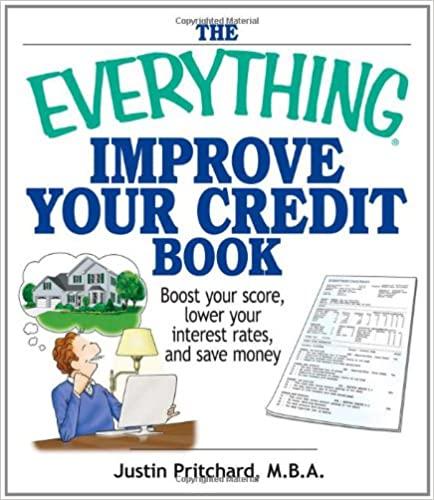Question
3) Consider the information below from a firm's balance sheet for 2007 and 2008. Current Assets 2008 2007 Change Cash and Equivalents $1,561 $1,800 -$
3) Consider the information below from a firm's balance sheet for 2007 and 2008.
Current Assets 2008 2007 Change
Cash and Equivalents $1,561 $1,800 -$ 239
Short-Term Investments $1,052 $3,010 -$1,958
Accounts Receivable $3,616 $3,129 $ 487
Inventories $1,816 $1,543 $ 273
Other Current Assets $ 707 $ 601 $ 106
Total Current Assets $8,752 $10,083 -$1,331
Current Liabilities
Accounts Payable $5,173 $5,111 $ 62
Short-Term Debt $ 288 $ 277 $ 11
Other Current Liabilities $1,401 $1,098 $ 303
Total Current Liabilities $6,862 $6,486 $ 376
What is the Net Working Capital for 2008? What is it for 2007? What is the Change in Net Working Capital (NWC)? Assuming the Operating Cash Flows (OCF) are $7,155 and the Net Capital Spending (NCS) is $2,372, what is the Cash Flow from Assets? SHOW ALL WORK
6) Amy Plisko is 23 years old and plans to retire in 32 years when she is 55 years old. Amy just graduated from a university in the West. Upon graduation, she took a job with a starting annual salary of $50,000. Amy asks you to answer the following two questions:
1. If her salary increases at a rate roughly equal to the U.S. long-run average annual rate of inflation over the past 80 years (about 3% per year), how large will her annual salary be in her last year before retirement? (Use 32 years.)
2. If her salary increases at a rate roughly equal to the U.S. long-run average annual rate of return on common stocks over the past 80 years (about 10.5% per year), how large will her annual salary be in her last year before retirement? (Use 32 years.)
After hearing your answers, Amy says, "WOW ! That's quite a difference." She decides that she would like an income of $500,000 per year each year in retirement, provided in equal annual end-of-the-year cash flows. These cash flows need to last for 40 years, and her investments would earn an annual rate of return of 7% during her retirement.
Amy's final question to you is how much money must she save in equal annual end-of-the-year cash flows for the next 32 years to provide for her desired retirement, if her investments earn roughly the same rate of return as those earned by U.S. small stocks over the last 80 years (geometric average is about 12% per year). SHOW ALL WORK
Step by Step Solution
There are 3 Steps involved in it
Step: 1

Get Instant Access to Expert-Tailored Solutions
See step-by-step solutions with expert insights and AI powered tools for academic success
Step: 2

Step: 3

Ace Your Homework with AI
Get the answers you need in no time with our AI-driven, step-by-step assistance
Get Started


